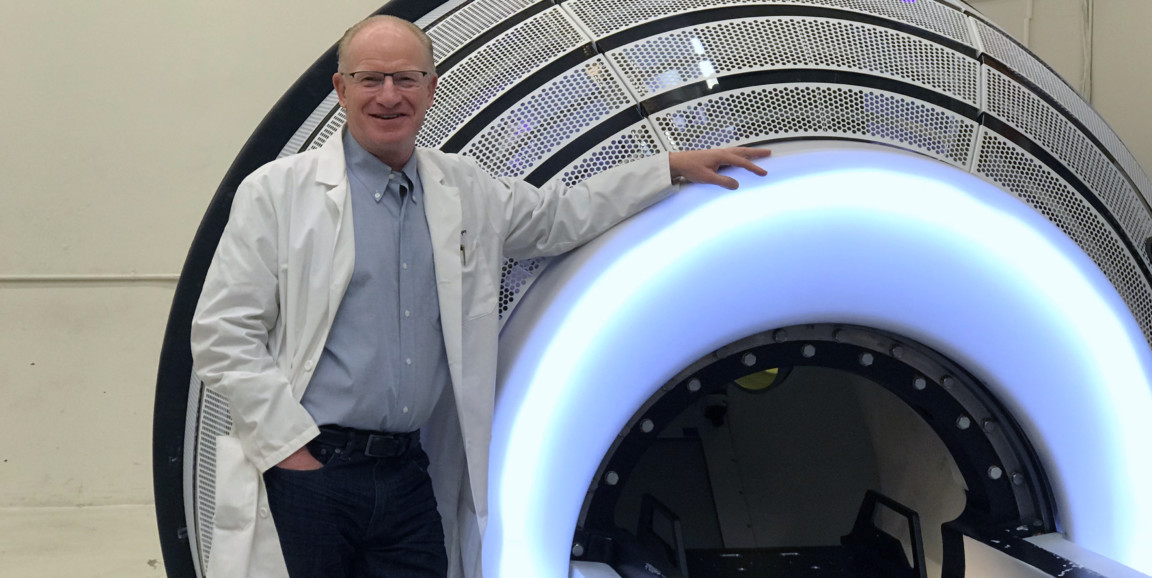John Adler, MD, is a neurosurgeon and innovator whose desire to help patients has led him down an entrepreneurial path multiple times. Speaking recently at the 20th Annual Fogarty Lecture, an event co-sponsored by the Stanford Byers Center for Biodesign, Adler said that bringing new medical technologies from an idea into patient care is the hardest thing he’s ever done. “Don’t do it to make money,” he cautioned the audience. “Do it because you’re passionate.”
Adler’s entrepreneurial journey began after a fellowship with Swedish physician Lars Leksell, MD, whose Gamma Knife made it possible to non-invasively treat deep brain lesions using targeted radiation beams. The treatment relied on an external frame bolted to the patient’s skull to precisely orient the beams so that they left surrounding healthy brain tissue unscathed.
Adler was captivated. “Because the treatment was non-invasive, I saw patients with brain tumors being treated almost as outpatients. I knew that in the U.S. these same individuals would have been in intensive care for a month following surgery,” he said. “The key was knowing exactly where you were in the human body so that you could direct and concentrate the radiation beams.”
Adler had an insight about a way to make the treatment even better for patients: “I thought if we could use imaging to precisely locate and guide therapeutic radiation beams, we wouldn’t need the external frame. It would also open the possibility of treating lesions anywhere in the body.”
A faculty member at Stanford, Adler worked with the Department of Engineering to prototype what became known as the Cyberknife® Frameless Stereotactic Radiosurgery System. He also started a company to commercialize his invention and bring it into patient care. This was his first taste of the difficult path for health technology entrepreneurs with “audacious ambitions,” as he said every step along the way, from raising money to obtaining regulatory approval, proved a long and exhausting battle. Fortunately, Adler persevered and today the Cyberknife has been used to treat more than one million patients.
But Adler didn’t stop there. “Cyberknife was a breakthrough therapy,” he said. “It is fast, highly effective, painless, and low risk. But although there are more than two million patients every year with head and neck tumors who need radiosurgery, only around 150,000 of them ever get it."
The problem was cost. “It’s the most expensive equipment in health care today," he explained. "Because of that, treatment is out of reach for 90 percent of the world’s population.”
Motivated to make radiosurgery more accessible, Adler began to conceptualize another treatment system - one that was low energy and self-shielding so that it didn't require a radiation-proof facility, with advanced, easy-to-use software that was optimized for neurosurgeons, but could be used by any radiation therapist. After trying for two years to develop his technology without launching a company, Adler reluctantly found himself at the helm of another start-up. The new product, the Zap Surgical System, received regulatory approval in September of 2017 and is now preparing for its launch into patient care.
While Adler’s calling will always be his role as a physician, he sees entrepreneurship as a mechanism for helping patients on a larger scale. “I am committed to breaking down barriers and improving the patient experience," he said.
Photo by Cece Torres




